INDIAN ARMED FORCES CHIEFS ON OUR RELENTLESS AND FOCUSED PUBLISHING EFFORTS

The insightful articles, inspiring narrations and analytical perspectives presented by the Editorial Team, establish an alluring connect with the reader. My compliments and best wishes to SP Guide Publications.

"Over the past 60 years, the growth of SP Guide Publications has mirrored the rising stature of Indian Navy. Its well-researched and informative magazines on Defence and Aerospace sector have served to shape an educated opinion of our military personnel, policy makers and the public alike. I wish SP's Publication team continued success, fair winds and following seas in all future endeavour!"

Since, its inception in 1964, SP Guide Publications has consistently demonstrated commitment to high-quality journalism in the aerospace and defence sectors, earning a well-deserved reputation as Asia's largest media house in this domain. I wish SP Guide Publications continued success in its pursuit of excellence.
- Operation Sindoor: Resolute yet Restrained
- Advanced MRSAM for India for a greater firepower
- Japan and India set forth a defence cooperation consultancy framework, talks on tank and jet engines
- Uri, Pulwama and now Pahalgam
- Terrorist Attack in Pahalgam in Kashmir: Unfolding a long surgical war against PAK
Boosting Border Air Defence
India is rapidly strengthening its air-defence architecture, accelerating procurement and expanding radar coverage to build a fully integrated, nationwide, multi-layered defence shield
 |
The Author is Former Director General of Information Systems and A Special Forces Veteran, Indian Army |

According to new reports of October 6, 2025, the Indian Army is accelerating the purchase of six mobile AK-630 multi-barrel air defence gun (AD) systems to protect border population centres from hostile drones, rockets, and mortars. During the recent Operation 'Sindoor', Pakistan had launched a series of drones/drone swarms against India although all were shot down successfully. The six AK-630 AD gun systems are to bolster security around towns. These systems are being procured from the 'Advanced Weapons and Equipment India Limited' (AWEIL), headquartered in Kanpur, Uttar Pradesh; a state-owned company and a unit of the Field Gun Factory in Kanpur. The acquisition follows the need for faster and more responsive defences to protect civilians; lessons learnt form Operation 'Sindoor'.
Indian Army is accelerating the purchase of six mobile AK-630 multi-barrel air defence gun (AD) systems to protect border population centres from hostile drones, rockets, and mortars
The AK-630 is a fully automatic rotary AD system originally developed in the 1970s by the Soviet Union and subsequently upgraded to counter modern multi-domain threats. Its designation refers to six 2-meter barrels and a 30mm caliber. The cannon has a muzzle velocity of 900 meters (2,953 feet) per second and can fire up to 4,000 rounds per minute at targets within 4-6 km range. Weighing 1,000 kg, the AK-630 can be mounted on a trailer or towed by a high-mobility vehicle (HMV) for rapid redeployment. It includes an all-weather electro-optical fire control system for detection and engagement in day, night, and low-visibility conditions.
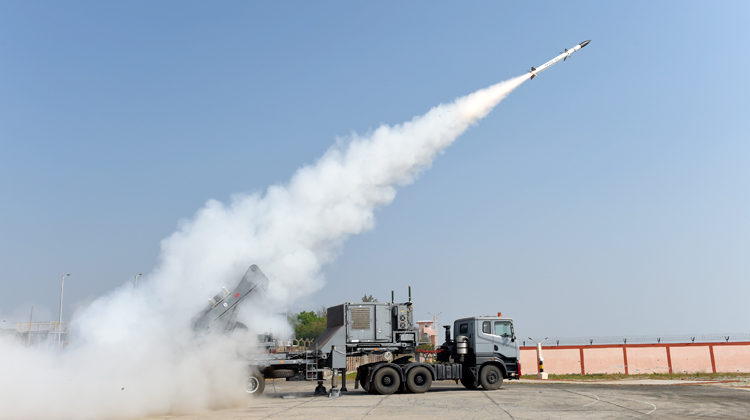
The Indian Army is procuring the above AD systems under its emergency procurement programme approved in the aftermath of Operation 'Sindoor'. The new guns will be deployed to counter threats from unmanned aerial vehicles, rockets, artillery, and mortar fire in key population centres and religious sites near the international border, particularly in Jammu and Kashmir. Media has quoted an army officer saying, "More such guns, which act as close-in weapon systems because of their high rate of fire, will be ordered at a later stage." Once fielded, these 30mm guns, with a 4-6 km range and high rate of fire, will be integrated into the Indian Army's 'Akashteer' AI-enabled command network for coordinated, real-time responses to aerial attacks; eventually becoming part of India's Mission 'Sudarshan Chakra' - the long-term initiative to build a national air defence shield. Sudarshan Chakra will also include space-based sensors for early warning and tracking threats.
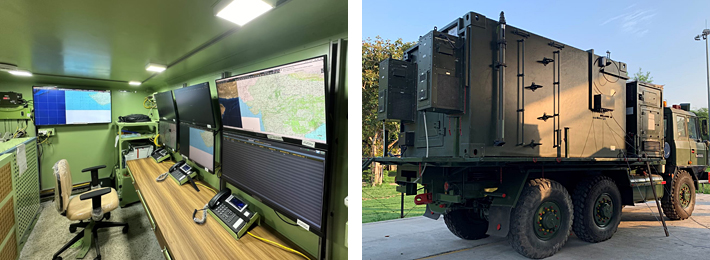
Concurrently, India is set to expand its advanced air defence arsenal by procuring five additional S-400 Triumf systems from Russia, according to news reports of October 6, 2025. The effectiveness of the S-400 was underscored during Operation 'Sindoor', when the system successfully intercepted a range of Pakistani drones and missile threats in early May 2025. Its advanced 400-km range radar and capability to engage multiple targets simultaneously enabled India to maintain secure control over its airspace and protect vital assets. The successful operational deployment has influenced the decision to expand the fleet, ensuring greater coverage of both strategic inland and coastal regions. New reports indicate that the Ministry of Defence (MoD) has initiated discussions with Moscow to finalise the deal ahead of Russian President Vladimir Putin's scheduled visit to India in December 2025.
Concurrently, India is set to expand its advanced air defence arsenal by procuring five additional S-400 Triumf systems from Russia
These new acquisitions build upon the original $5.43 billion agreement signed between India and Russia on October 5, 2018, for five S-400 systems; out of which the balance two are expected to be delivered by the end of 2026. The new deal will give India a total of 10 x S-400 Triumf systems once fully operational. Under the proposed arrangement, three of the additional S-400 systems will be procured directly from Russia, while the remaining two will be produced in India by private defence firms through a transfer of technology (ToT) mechanism.
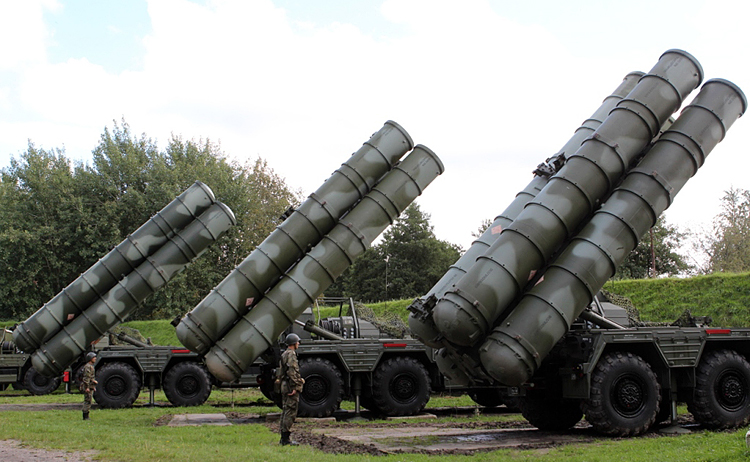
This S-400 expansion aims to close existing air defence gaps in critical regions bordering Pakistan and China, enhancing India's layered air defence network that includes indigenous systems such as the Akash-NG and the planned Sudarshan Chakra integrated air defence grid. Russia has also offered India its new S-500 Prometey AD missile system, however, there are no plans presently to procure these; especially since the S-400 has already been integrated into India's command and control network, while future collaborations may explore co-development opportunities for next-generation missile systems.
This S-400 expansion aims to close existing air defence gaps in critical regions bordering Pakistan and China, enhancing India's layered air defence network
The Indian Army has initiated procurement of the indigenous 'Situational Awareness for Kinetic Soft and Hard Kill Assets Management' (SAKSHAM), Counter Unmanned Aerial System (UAS) Grid; a cutting-edge command and control network designed to detect, track, identify, and neutralise enemy drones in real time. Developed in collaboration with Bharat Electronics Limited (BEL), Ghaziabad, the system operates on the secure Army Data Network (ADN) and provides a unified "Recognised UAS Picture" across the newly defined Tactical Battlefield Space (TBS) - a domain extending up to 3,000 metres (10,000 feet) above ground level.
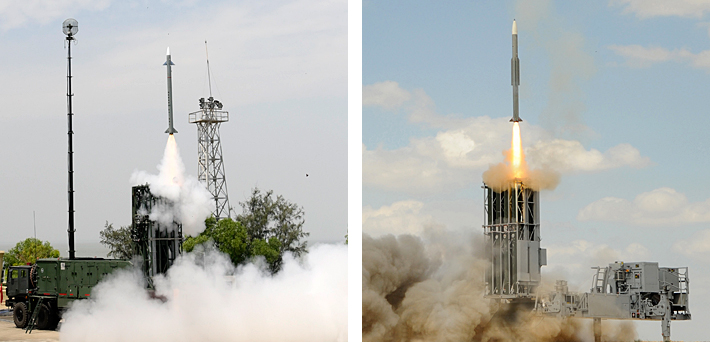
On October 15, 2025, the Indian Army signed a contract with Thales, UK, for the procurement of the Light Weight Modular Missile (LMM) System; a lightweight, man-portable missile system designed for rapid deployment in varied operational environments, including the harsh conditions of high-altitude areas. Operating on the Laser Beam Riding principle, the LMM is resistant to evasive manoeuvres by modern aerial platforms. Capable of neutralising aircraft, helicopters, UAVs, and UCAVs, the LMM is effective even against aerial targets with low infrared (IR) signatures.With an operational range of over six kilometres and the ability to perform in all-weather conditions, the system provides a critical edge to the Indian Army's short-range air defence network.
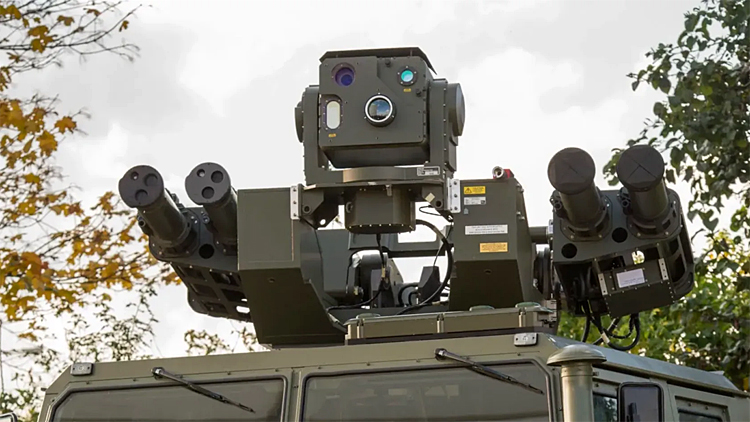
The damages caused to Pakistani airbases and air defence systems, together with Pakistan's inability to attack targets in India during Operation 'Sindoor', has exposed Pakistan's vulnerability in conventional air operations. Intelligence assessments now indicate growing concerns about Pakistan Air Force (PAF) making attempts to breach the Indian airspace through the Arabian Sea. The Indian Air Force (IAF) is expanding radar coverage with advanced installations, including a new radar centre being established in Kozhikode, Kerala, to provide comprehensive surveillance over the Arabian Sea and southern airspace. This facility will integrate into the Integrated Air Command and Control System (IACCS) providing 360-degree coverage and early warning capabilities against aerial threats.
India's ambitious Mission Sudarshan Chakra project aims to link 6,000-7,000 radars, surveillance satellites, and directed energy weapons (DEWs) into a comprehensive national air defence network
India is reinforcing its western coast with an integrated Surface-to-Air Missile network comprising the advanced S-400 Triumf system with 400km range capability, Barak-8 Medium Range SAM (70-100km range), and indigenous Akash missile systems (45km range). In addition, India has deployed an Integrated Counter-Unmanned Aerial System Grid combining electronic warfare capabilities, anti-drone technologies from DRDO, and kinetic interception systems.

The Indian Navy has significantly bolstered its presence in the Arabian Sea with combat-ready deployments including the indigenous aircraft carrier INS Vikrant and advanced destroyers equipped with Barak-8 LRSAM systems. Recent Exercise Konkan-2025 with the UK Royal Navy demonstrated enhanced anti-air warfare capabilities and interoperability. The commissioning of INS Androth, India's second Anti-Submarine Warfare Shallow Water Craft, adds critical coastal defence capabilities against potential underwater ingress attempts. The vessel features advanced sonar systems and indigenously developed anti-submarine warfare equipment.
Finally, India's ambitious Mission Sudarshan Chakra project aims to link 6,000-7,000 radars, surveillance satellites, and directed energy weapons (DEWs) into a comprehensive national air defence network; providing enhanced monitoring and interception capabilities across all coastal regions including the vulnerable Arabian Sea approaches.





